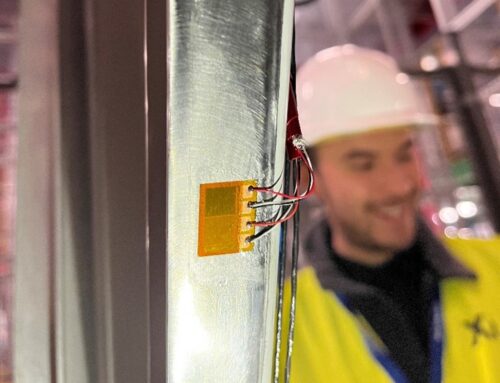Building acoustics – Interior design for eyes and ears
Background noise in some restaurants can reach uncomfortable volumes which can be loud enough to put you off your dinner. Can this be remedied?
The term “building acoustics” refers to buildings and the transmission of sounds between their structural elements such as floors, walls etc. Loud background noise is a common problem in public spaces which can lead to exhaustion and irritability. Designers tend to focus on the visual aspect of rooms whilst disregarding the impact of their design on the acoustic experience. Nowadays, it is a recurring phenomenon to come across beautiful open spaces with extremely poor acoustic properties.
What is reverb?

The main acoustic problem for noisy places typically relates to reverberation. This acoustic effect is produced as sound waves interact with the boundaries of a room. As sound waves travel and strike hard surfaces they are reflected back, superposing with the original incident sound. This reflection of sound waves will continue even after the original sound source has stopped. Hard flat surfaces, such as timber floors, tables and large tiled walls, all of which are commonly found in restaurants, contribute to the problem. If hard surfaces dominate a restaurant very little noise is absorbed and their acoustic reflections could negatively affect a room.
What is “reverberation time” and why is it important for your restaurant?
Reverberation is normally used in auditoriums and music venues as a technique in order to add warmth to the sound of the room. It can, however, affect the intelligibility of speech or produce undesired coloration of the sound.
Reverberation is normally measured in units of time. Acousticians tend to assess the reverberation characteristics of a room by a reverberation time (i.e. RT60). RT60 is the time taken for the sound pressure level to decay by 60 dB in a room. In restaurants the intelligibility of speech is important, therefore it is crucial to achieve a minimal value for RT60 as this will have an impact on the conversations of customers. In a nutshell, for speech intelligibility, a low reverberation time is desirable.
How to improve the acoustics of a noisy restaurant
Generally, the most cost-effective and simple solution is to add ‘’soft’’ surfaces to a reverberant room. These soft surfaces will absorb the sound and therefore reduce reverberation. Standard techniques typically require the installation of artefacts such as acoustic dispersers, bass traps, acoustic panels, acoustic insulation or other sound absorbing objects.
Although sound absorbers tend to be the best solution, careful installation is required. It is important to understand the characteristics of the room and what makes the sound behave the way it does. The best way to fully understand its characteristics is to undertake an acoustic measurement. This will lead to an indication of the acoustic product to install and where would it perform at the best of its capabilities.
Designing for Sound
Often, people only start thinking about building acoustics once they experience an actual problem. Acoustics should be part of the design process for a restaurant, requiring a close collaboration between all teams involved to achieve the best result.
If you are thinking about opening a new restaurant and are worried about how acoustics are going to affect the customer experience, there are a series of steps you can take to ensure a success.
Step 1: Detect the source of undesired noise and define what kind of sound you want to have in your space. Are you interested in a cosy/quiet restaurant or a music venue? Remember, reverberation is important! Choose a low reverberation time if you are designing a restaurant.
Step 2: Pay close attention to the characteristics of the room. This will indicate where it is best to put the acoustic treatment. Does your venue have high ceilings? Parallel walls? If so, you may want to damp those surfaces with acoustic absorbers to reduce the reverberation time.
Step 3: Choose the right acoustic treatment. In order to reduce the reverberation time, it is recommended you use appropriate acoustic absorbers, bass traps etc. We highly recommend that, before attempting a potentially costly solution, you should request a professional consultation. Feel free to contact us and we can guide you to the most effective solution.
How Xi Engineering can help you with building acoustics and noise reduction
Every restaurant design is unique, which is why we uniquely tailor all our acoustic solutions to each project. Our service includes acoustic measurements which will allow you to identify the right solutions for your space with minimal compromise to the design. If the structure of your venue is at the design stage we are able to provide acoustic simulations to optimise the acoustic experience for your customers.
To quantify and resolve problematic acoustics, it is necessary to understand the origin of the problem. Through the use of high-quality sound measurement equipment, such as class A sound level meters and high-end microphones, the experienced team at Xi can complete acoustic measurement surveys and find solutions which will satisfy your requirements.
If you experience acoustic problems, please contact us and one of our acoustics engineers will get in touch with you.





